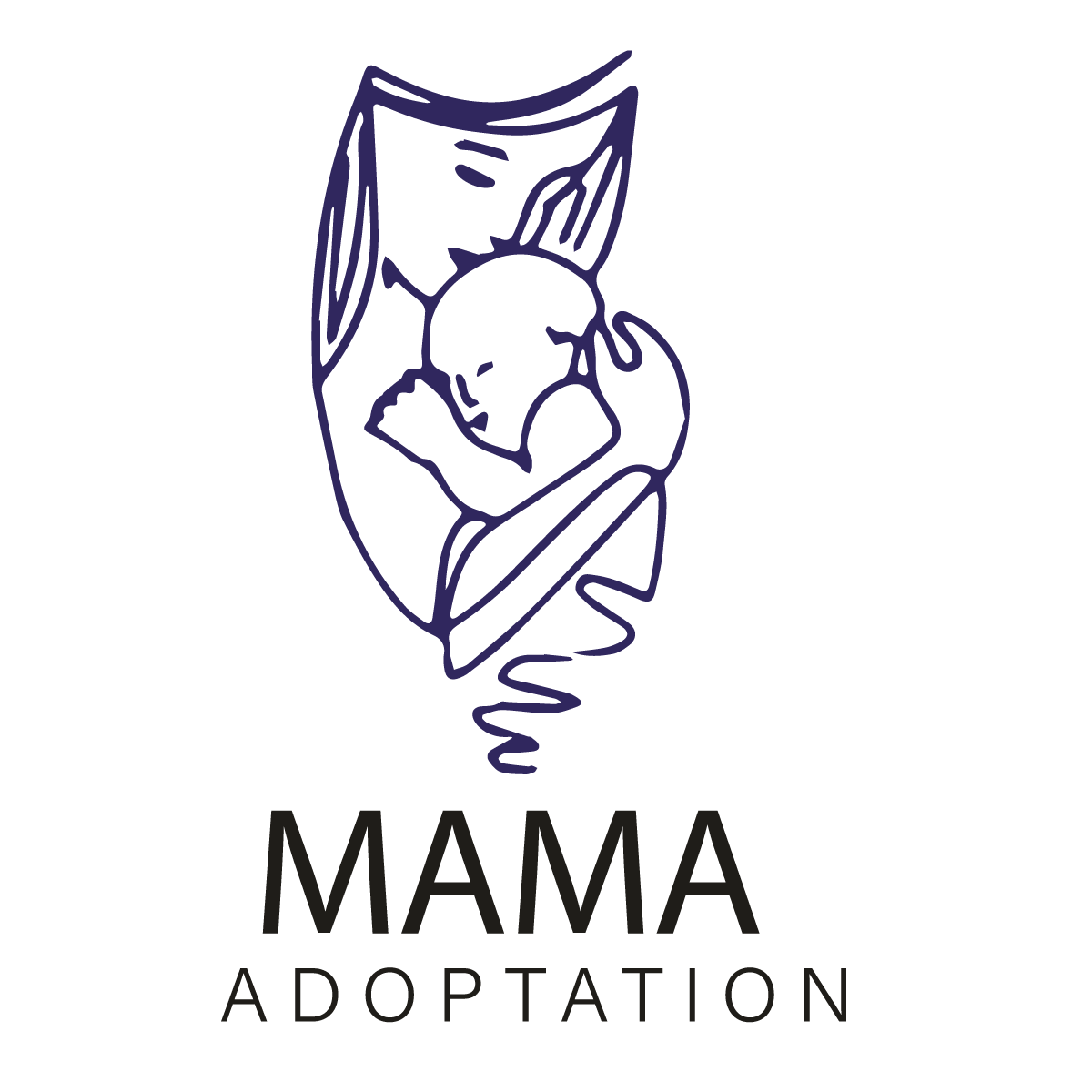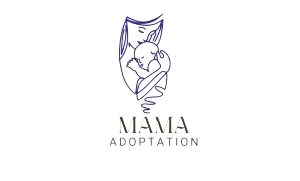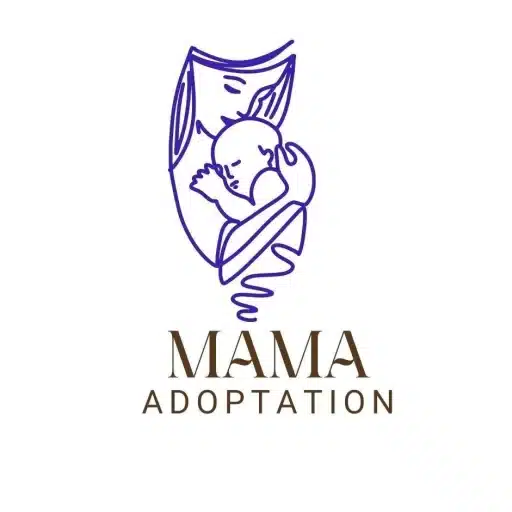Child adoption is a big step that changes many lives. Adopting a child has a profound and life-altering journey that brings hope, love, and transformation into the lives of children, birth parents, and adoptive families. You have to do proper research before adopting a child, seek guidance and know all the pros and cons of child adoption.In 2019, there were 25,000 adoptions by families in the United States who privately adopted children, and 66,087 adoptions were from foster care (Koh et al., 2020). As I have been through the same situation of child adoption, I am sharing my own experience below, as well as highlighting the pros and cons, challenges of child adoption. Keep reading!
How to Adopt a Child?
Adopting a child is a deeply rewarding and life-changing process, but it involves several steps and considerations. Here’s a general overview of the adoption process:
1. Research and Decide:
Start by researching different types of adoption (domestic, international, foster care) and understanding the legal and financial aspects. Decide what type of adoption aligns best with your preferences, resources, and values.
2. Choose an Adoption Agency or Attorney:
Select a reputable adoption agency, facilitator, or attorney. Ensure they are licensed and have a good track record. They will guide you through the process, provide necessary information, and assist with paperwork.
3. Complete Pre-Adoption Requirements:
This may include background checks, home studies, interviews, and attending adoption education classes. These steps help agencies assess your readiness to adopt and ensure a suitable environment for the child.
4. Create a Profile:
For some types of adoption, you might need to create a profile or portfolio introducing yourselves to birth parents or adoption authorities. This profile highlights your life, values, and reasons for wanting to adopt.
5. Match with a Child:
Once approved, you’ll either be matched with a child directly or placed on a waiting list. This part involves careful consideration and often includes meetings or conversations to ensure compatibility.
6. Legal Process:
Work with your agency or attorney to complete legal paperwork required for adoption. This includes court appearances and finalizing the legal aspects of the adoption.
7. Post-Adoption Support:
After the adoption is finalized, there might be follow-up visits or support services to ensure the child’s well-being and your adjustment as a new family.
8. Celebrate and Adjust:
Welcoming a child into your family is a significant change. Give yourselves and the child time to adjust, bond, and create a loving environment.
Remember, the adoption process can vary significantly based on the type of adoption and the laws in your country or state. It’s advisable to seek guidance from professionals and support throughout the journey.
Pros of Child Adoption
Adopting a child can bring numerous positive outcomes for both the child and the adoptive family. Here are some of the pros of child adoption:
- Building a Family: For individuals or couples unable to have biological children or choosing not to, adoption offers a way to create or expand a family and experience the joys of parenthood.
- Providing a Loving Home: Adoption provides a stable, nurturing environment for a child who may not have had such stability in their birth family. It offers a chance for children to grow up in a loving and supportive household.
- Giving a Child Opportunities: Adoption provides a child with access to resources, education, healthcare, and opportunities they might not have had otherwise. It opens doors to a better quality of life.
- Emotional Fulfillment: For many adoptive parents, the act of providing a home and love to a child in need brings immense emotional satisfaction and fulfillment.
- Diversity and Inclusivity: Adoption often results in diverse families, promoting inclusivity and celebrating different backgrounds, cultures, and traditions within a family unit.
- Personal Growth: Adopting a child can be a transformative experience, fostering personal growth, empathy, and a deeper understanding of the complexities of family and parenthood.
- Helping Children in Need: By adopting, individuals or families contribute directly to reducing the number of children in foster care or orphanages, providing a better future for those children.
- Forming Lifelong Bonds: Adoption creates lifelong bonds between the child and the adoptive family, fostering strong, lasting relationships built on love and commitment.
- Giving a Second Chance: Adoption gives children who may have faced difficult circumstances, such as abuse, neglect, or abandonment, a second chance at a happy, fulfilling life.
- Fulfilling a Desire to Parent: For those with a strong desire to nurture and parent, adoption offers an avenue to fulfill that dream while making a positive impact on a child’s life.
Adoption can be a beautiful and rewarding journey, offering both the child and the adoptive family a chance for growth, love, and a shared future. Learn more!
Cons of Child Adoption
Certainly, adoption can be incredibly rewarding, but it’s essential to understand the potential challenges or cons associated with the process:
- Emotional Complexity: Adopting a child can bring emotional complexities for both the child and the adoptive parents. The child might struggle with feelings of loss, identity, or attachment due to their early experiences. On the other hand, adoptive parents might face challenges in bonding or addressing the child’s emotional needs, especially if the child has experienced trauma or multiple placements.
- Legal and Administrative Processes: The adoption process involves significant paperwork, background checks, home studies, and legal proceedings. It can be intricate, time-consuming, and expensive, involving various fees and processes that could be overwhelming for prospective parents.
- Financial Costs: Adoption expenses can vary widely and might include application fees, agency fees, legal fees, home studies, and travel expenses (especially for international adoptions). The financial burden can be substantial, deterring some prospective parents from pursuing adoption.
- Uncertainty and Waiting Periods: Waiting for a match with a child can be emotionally taxing. The uncertainty regarding the timing of the process and the outcome might lead to stress and anxiety for adoptive parents.
- Health and Developmental Challenges: Some adopted children might have pre-existing health conditions, developmental delays, or emotional trauma due to their early life experiences. This may require specialized care, therapies, or additional support, adding to the complexity of parenting an adopted child.
- Attachment and Behavioral Issues: Children who have experienced trauma or multiple placements might struggle with attachment issues, leading to challenging behaviors. Addressing these issues requires patience, understanding, and potentially therapeutic interventions.
- Social Stigma and Prejudice: Despite progress, adoption can still face societal stigmas or prejudices in some communities or cultures. Adoptive families might encounter misconceptions or judgment, affecting their social interactions or support systems.
- Complex Family Dynamics: Open adoptions or interactions with birth families can introduce complexities in family dynamics. Balancing relationships between birth and adoptive families can be challenging and might require clear communication and boundary-setting.
- Unforeseen Challenges: Adoptive parents might encounter unexpected challenges in raising an adopted child, such as difficulties in addressing the child’s history or integrating them into the family. These challenges might require flexibility and adaptability in parenting strategies.
- Legal Risks and Reversals: In rare cases, legal risks can arise, such as birth parents contesting the adoption or changes in laws affecting the adoption process, leading to disruptions or reversals.
Understanding these potential challenges is crucial for prospective adoptive parents. Seeking support, education, and guidance from professionals and support networks can help navigate these cons and ensure a smoother adoption journey.
Read also: Child Adoption Advantages and Disadvantages (Facts)
Types of Child Adoption
There are many types of child adoption. I have mentioned some of them below:
1. Domestic Adoption:
- Overview: Domestic adoption involves adopting a child within one’s own country.
- Process: Prospective parents work with adoption agencies or attorneys, either public or private, to navigate the adoption process.
- Types of Placements: It encompasses a wide range, from newborn infants to older children or sibling groups.
- Considerations: Requirements, waiting times, and procedures can vary significantly based on state laws and agency practices.
2. International Adoption:
- Overview: International adoption refers to adopting a child from a different country.
- Procedure: It involves navigating the legal and bureaucratic procedures of both the adoptive country and the child’s country of origin.
- Child Profiles: Often involves older children, sibling groups, or children with specific medical or special needs.
- Challenges: Lengthy processes, cultural adjustments, and potential language barriers can add complexity.
3. Foster Care Adoption:
- Overview: Foster care adoption occurs when a child in the foster care system becomes legally free for adoption.
- Pathway: Children in foster care who cannot return to their birth families may find permanent homes through foster parents or prospective adoptive parents.
- Support Systems: It often involves support from social workers and agencies to facilitate the transition from fostering to adoption.
4. Relative or Kinship Adoption:
- Overview: This type involves a child being adopted by a relative, such as a grandparent, aunt, uncle, or older sibling.
- Family Network: Aims to keep the child within their extended family while providing a stable and permanent home.
5. Step-Parent Adoption:
- Overview: Step-parent adoption occurs when a step-parent legally adopts their spouse’s child from a previous relationship.
- Purpose: Solidifies the legal relationship between the step-parent and the child, creating a formal parental bond.
6. Open Adoption:
- Definition: In an open adoption, ongoing communication and contact exist between birth parents, adoptive parents, and sometimes the child.
- Flexibility: The degree of openness varies, allowing for sharing information or maintaining relationships based on mutual agreements.
7. Closed Adoption:
- Definition: Closed adoption involves limited or no contact between birth parents, adoptive parents, and the child post-adoption.
- Privacy: Typically, minimal or no identifying information is exchanged between the parties involved.
Each type of adoption comes with its own set of unique considerations, legal aspects, and emotional dynamics. Prospective adoptive parents should thoroughly research and evaluate which type aligns best with their preferences, capabilities, and the needs of the child they aim to adopt. Seeking guidance from adoption professionals is crucial in navigating these varied adoption pathways.
Emotional and Psychological Impact of Child Adoption
Child adoption can have significant emotional and psychological consequences for everyone concerned, including the adoptive child, their biological parents, and the adoptive family. A child adopted from a foster home may experience grief, a search for identity, and attachment difficulties, especially if he or she has suffered trauma or been placed many times. While adoption provides stability and a loving home, the child may have doubts about their origins and struggle to reconcile their past and present. It is common for birth parents to feel grief, guilt, or loss after placing their child for adoption. Often, adoptive parents experience a roller coaster of emotions, from joy to fulfillment to difficulties bonding, meeting the child’s needs, and navigating the adoption process. A child’s age at the time of adoption greatly influences the emotional impact.
Legal and Ethical Considerations for Child Adoption
Child adoption requires strict adherence to legal and ethical considerations to ensure a fair and transparent process that prioritizes the best interest of the child. Obtaining consent from birth parents, conducting thorough home studies, and adhering to legal procedures for termination of parental rights are crucial steps. Ethical adoptions demand transparency, honesty, and the avoidance of exploitation of any party involved. Adoption attorneys specialized in adoption law play a pivotal role in handling legal documentation and compliance with adoption laws. Post-adoption support and counseling, along with compliance with international adoption laws, further contribute to a responsible and ethical adoption process. Upholding professional codes of ethics and considering the child’s involvement and preferences, where applicable, are fundamental to ethical adoption practices. An Historical Trends and the Determinants of Adoption Demand and Supply, 1951-2002 results about 2.5% of all children in the United States are adopted.
Support Systems for Adoptive Families
Support systems for adoptive families are crucial in providing guidance, assistance, and emotional support throughout the adoption journey. Several key support systems exist to aid adoptive families:
1. Adoption Agencies and Professionals:
Adoption agencies and specialized professionals offer guidance, information, and resources before, during, and after the adoption process.They provide education, counseling, and assistance in navigating legal procedures and requirements.
2. Support Groups and Networks:
Support groups for adoptive families offer a sense of community, understanding, and shared experiences. These groups provide emotional support, advice, and practical tips for coping with challenges specific to adoption.
3. Therapeutic Services:
Access to therapists or counselors experienced in adoption-related issues can be beneficial. These professionals offer individual or family therapy to address emotional and behavioral challenges, attachment issues, or identity exploration.
4. Education and Workshops:
Adoption-related workshops, seminars, and educational programs help families understand adoption dynamics, parenting strategies, and child development. These resources offer valuable insights and tools for navigating the unique aspects of adoptive parenting.
5. Online Resources and Communities:
Reputable websites, forums, and online communities dedicated to adoption provide access to information, forums for discussion, and connections to other adoptive families. These platforms offer support, advice, and a sense of belonging for families navigating the adoption journey.
6. Post-Adoption Services:
Many agencies and organizations provide post-adoption services, including counseling, support hotlines, and resources tailored to address challenges that arise after the adoption is finalized. These services ensure ongoing support and assistance as families adjust and grow together.
7. Social Services and Advocacy Groups:
Social service agencies and advocacy groups offer guidance, advocacy, and access to community resources. They provide information on available services, support in accessing benefits, and help in navigating the education or healthcare system for adopted children.
Access to these support systems can greatly benefit adoptive families, providing them with the resources, guidance, and emotional support necessary for a successful and fulfilling adoption experience.
Celebrating Adoption: Success Stories
Chloe and James really wanted to have a bigger family, so they decided to adopt a child. After a while, they got a call that changed everything. They were told about Olivia, a happy and energetic five-year-old girl who needed a loving family. Olivia had been waiting for a home for a long time. When Chloe and James met Olivia, they instantly felt a strong connection. They hugged Olivia and took care of her, making sure she felt loved. Even though it was tough in the beginning, they did lots of fun things together. Olivia loved hearing stories at bedtime, and Chloe and James loved being her parents. They helped Olivia feel good about herself and her future. As time passed, they celebrated special moments together, like Olivia’s first day at school and family trips. Now Olivia is a confident teenager, happy and doing well in a home full of love. Chloe and James are so grateful for Olivia, and they believe their story shows how love and family can make a big difference in adoption.
Conclusion:
In conclusion, adoption is a complex and deeply impactful journey that transforms the lives of children, birth parents, and adoptive families. It’s a testament to love, resilience, and the unwavering commitment to providing a stable and nurturing environment for a child in need. While the adoption process involves legal, emotional, and ethical considerations, its positive outcomes are abundant. The pros of adoption, including forming loving families, offering children opportunities, and fostering emotional fulfillment, far outweigh the challenges. Embracing support systems, understanding the emotional complexities, and celebrating success stories are crucial aspects of the adoption landscape. Every success story exemplifies the incredible power of love, perseverance, and the immeasurable gift of family. Adoption not only changes the lives of those directly involved but also enriches communities by fostering inclusivity, diversity, and understanding. Ultimately, the journey of adoption is a beacon of hope, showcasing the profound impact of compassion, kindness, and the transformative power of family.
FAQ’s
Q: What are some misconceptions about child adoption?
One common misconception is that adopted children may always struggle with behavioral or emotional issues. While some children may have challenges due to their past experiences, many thrive in loving and supportive adoptive families. Another misconception is that the biological parents may regret their decision to place their child for adoption. In reality, birth parents often make this decision with the child’s best interest in mind and may feel a sense of relief knowing their child is in a stable and caring environment.
Q: Are there age limits for adopting a child?
Age requirements for adoptive parents can vary based on adoption agencies, countries, or states. While some agencies may have minimum age requirements for adoptive parents, there might not be a strict upper age limit. However, older parents might need to provide additional documentation regarding their health and ability to care for a child.
Q: How can prospective adoptive parents prepare emotionally for the adoption process?
Emotional preparedness is crucial for prospective adoptive parents. Seeking support through counseling, joining support groups, or talking with other adoptive families can be helpful. Understanding the potential challenges, educating oneself about adoption, and being open to addressing emotional complexities that may arise during the process are essential.
Q: Are there financial assistance programs available for adoption?
Yes, there are various financial assistance programs available to help with adoption costs. These may include adoption grants, tax credits, employer benefits, and subsidies for adopting children with special needs. Researching and exploring available financial assistance options can significantly aid in managing adoption expenses.
Q: Can single individuals or LGBTQ+ couples adopt a child?
Absolutely. Single individuals and LGBTQ+ couples have the legal right to adopt in many countries and states. Adoption agencies often focus on assessing the prospective parent’s ability to provide a stable and loving environment for a child rather than their marital status or sexual orientation.
Q: How long does the adoption process usually take?
The duration of the adoption process varies widely depending on factors such as the type of adoption, country or state laws, agency processes, and the specific circumstances of the adoptive family. On average, it can take anywhere from several months to a few years to complete an adoption.
Q: What should families expect during the post-adoption phase?
Post-adoption, families might receive support services, counseling, or follow-up visits from adoption agencies. The focus is often on helping the child adjust, supporting the family’s transition, and addressing any challenges that arise as the family navigates their new dynamics.








